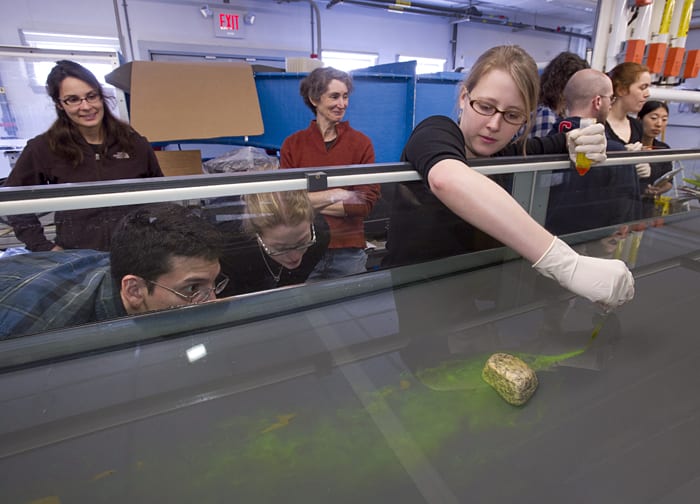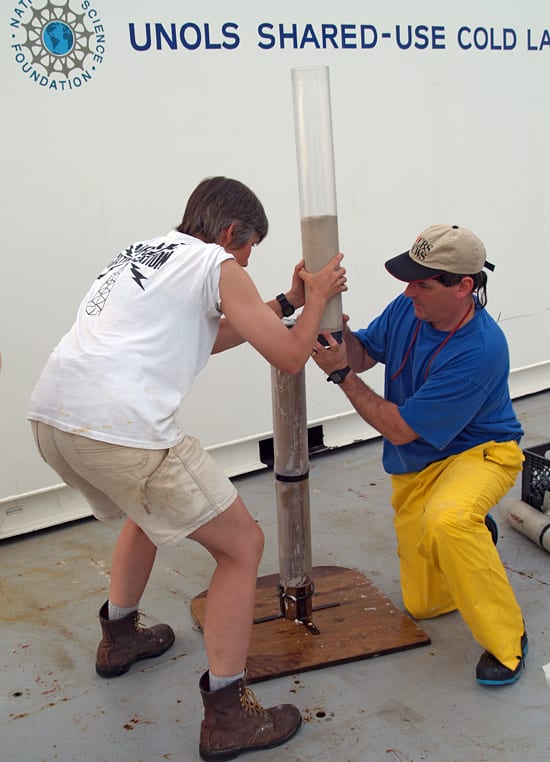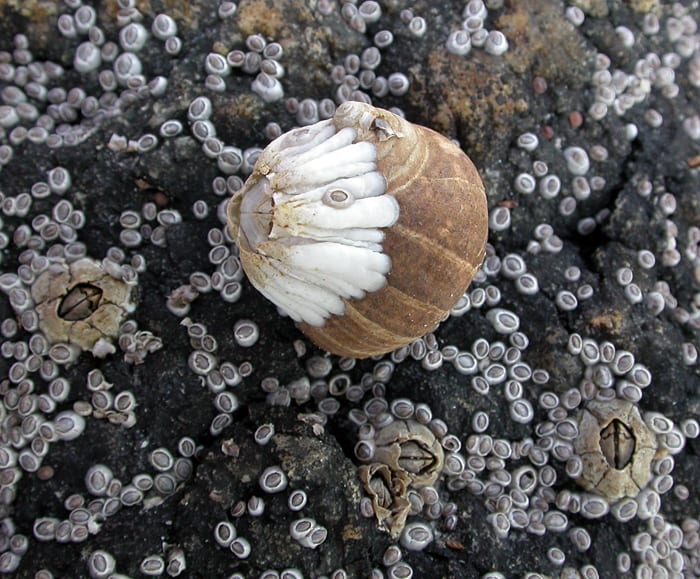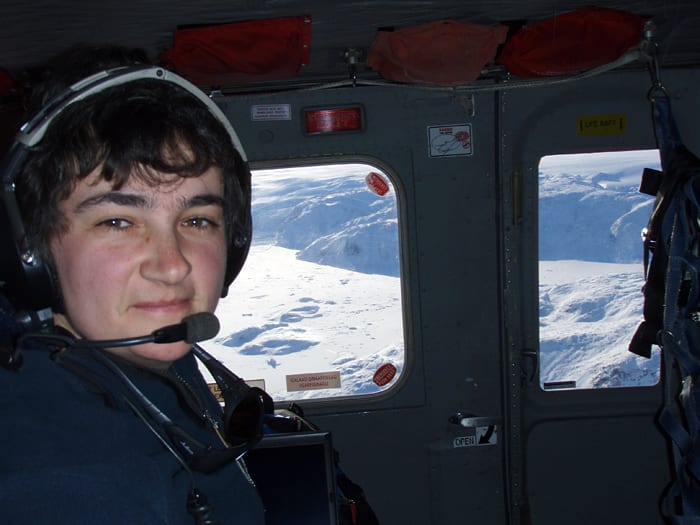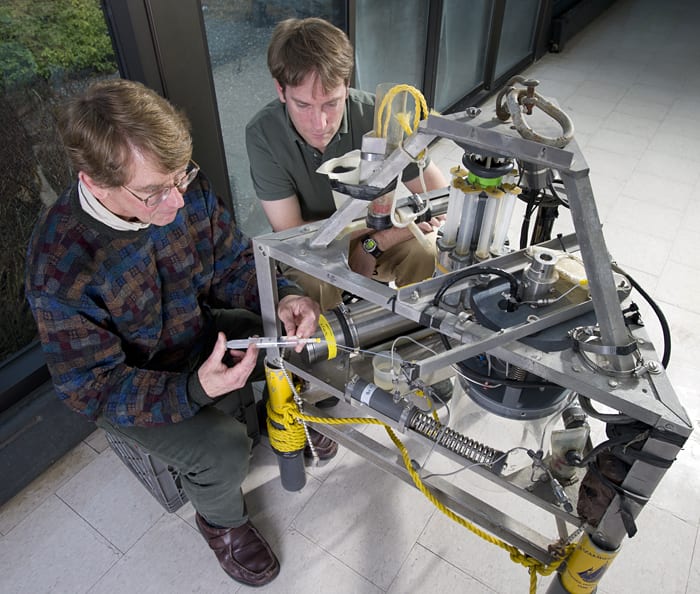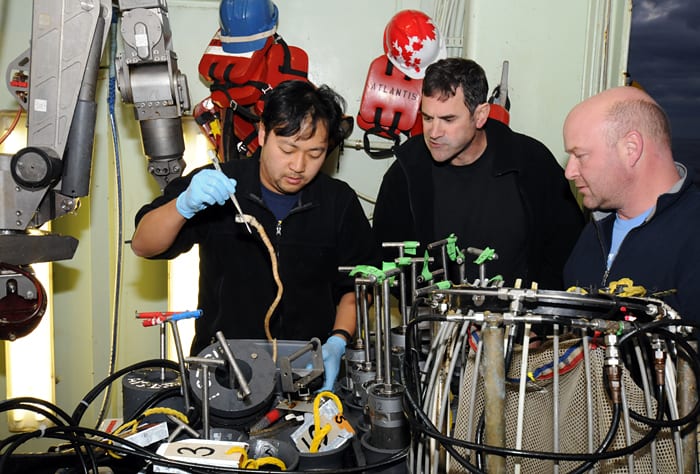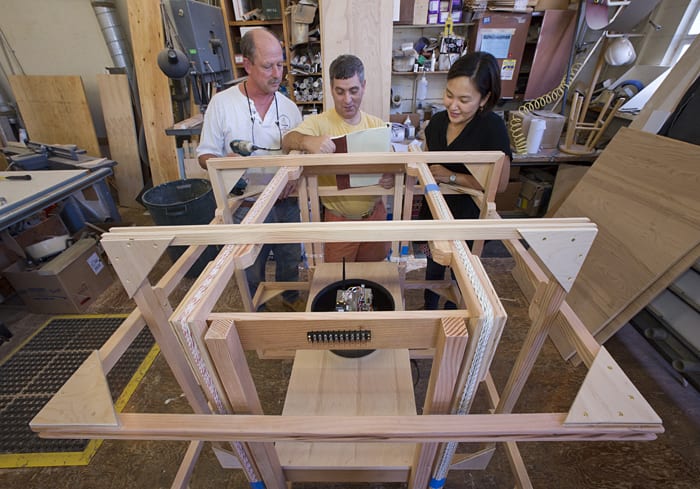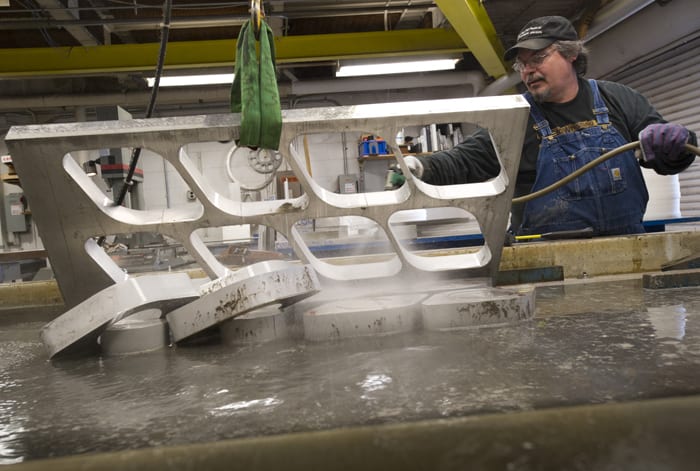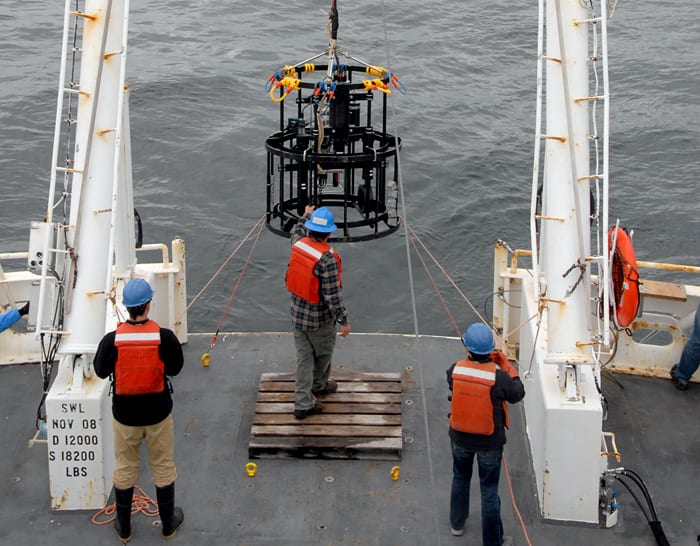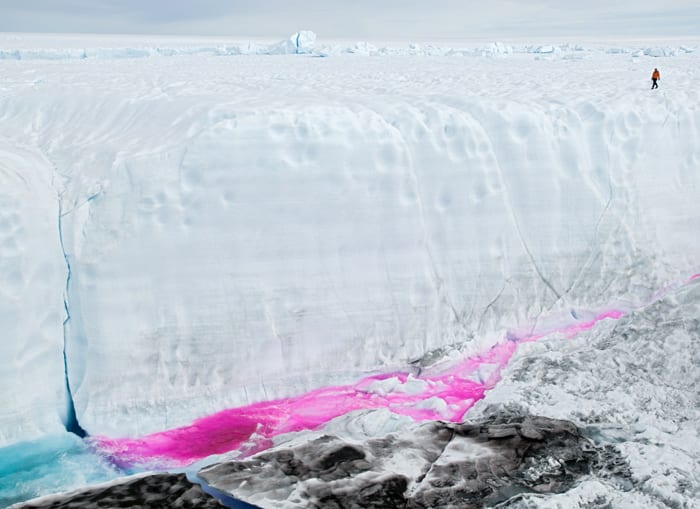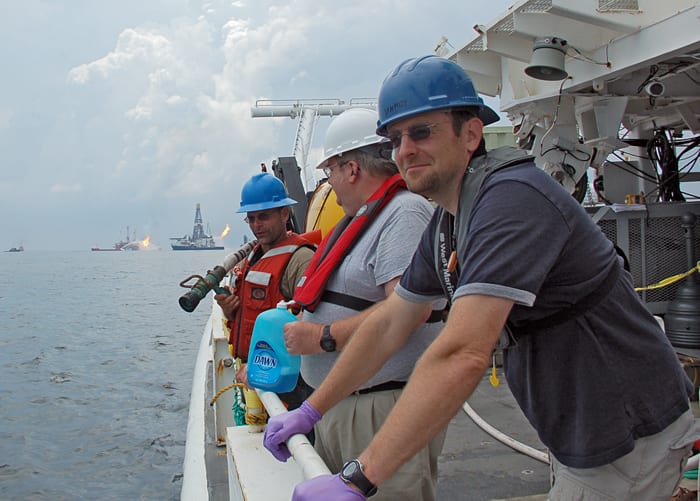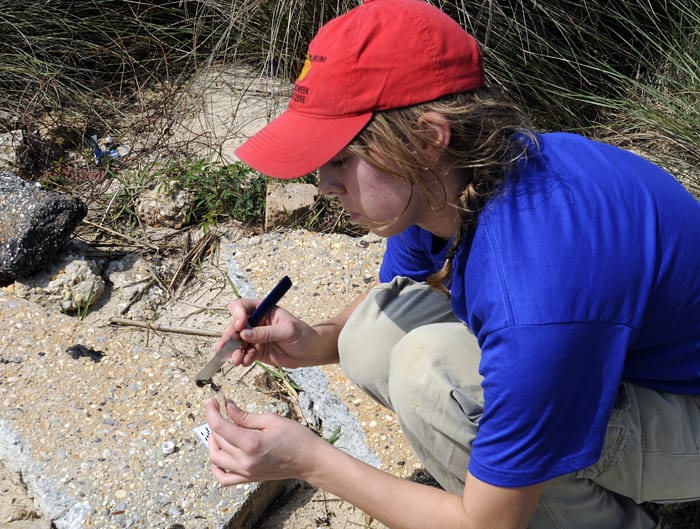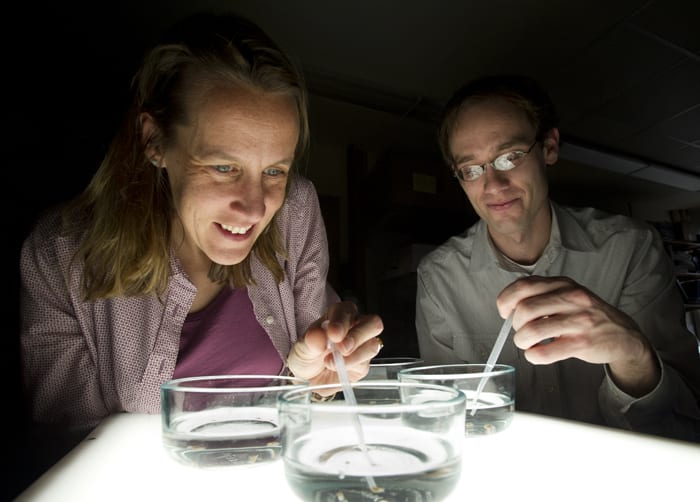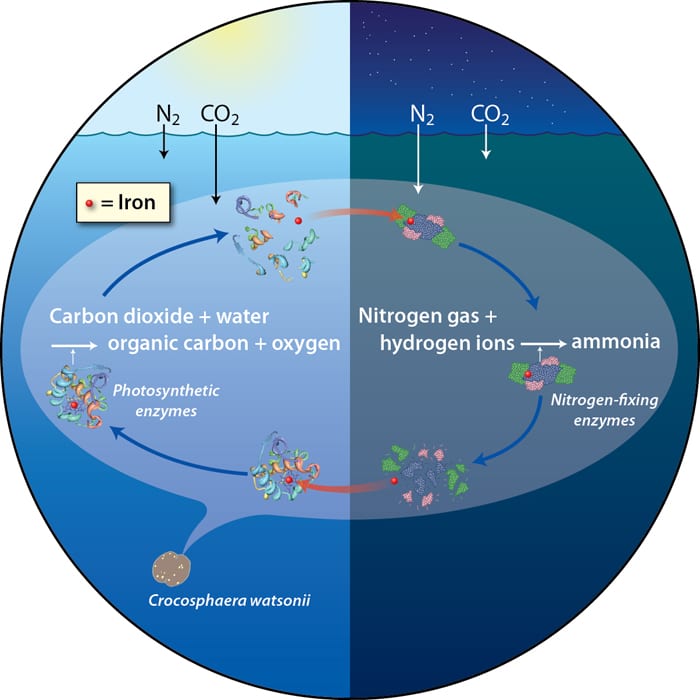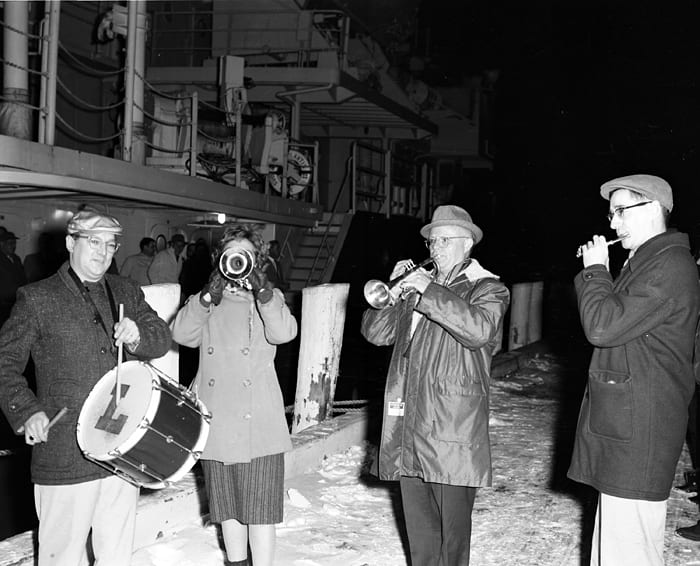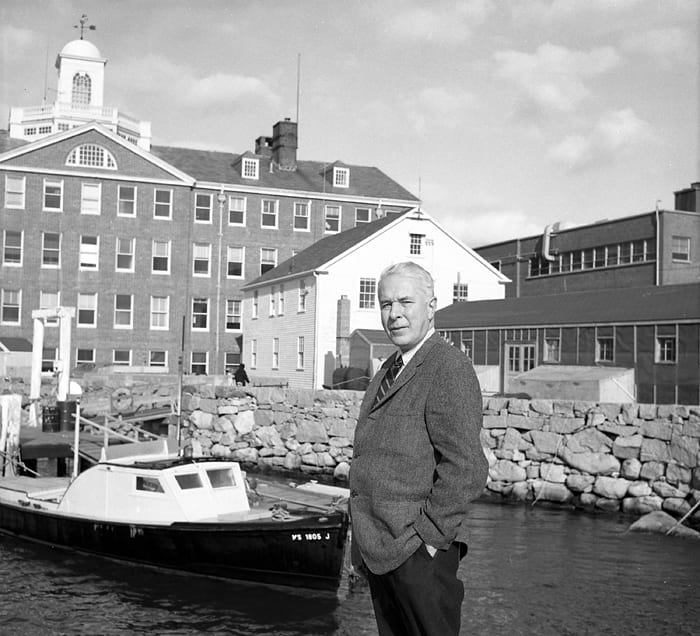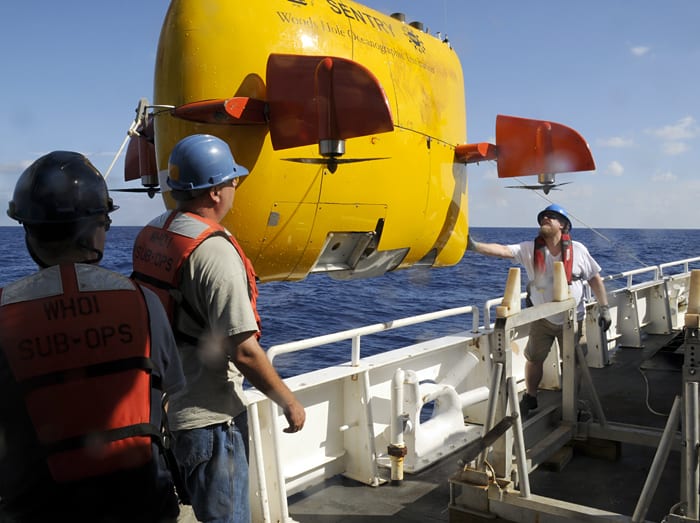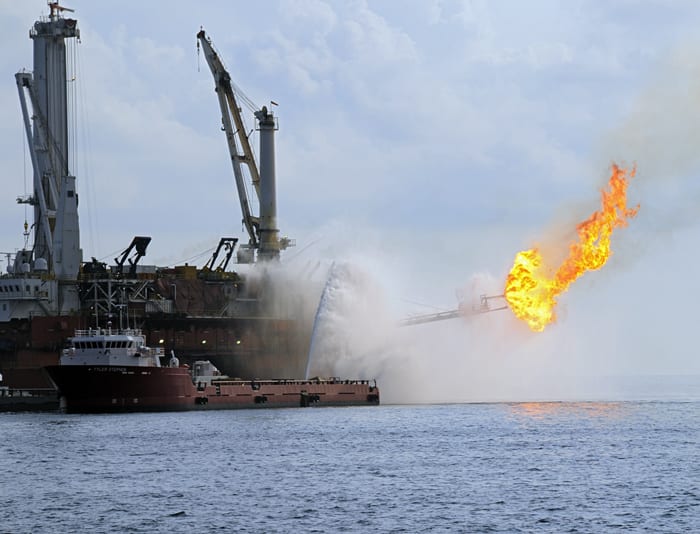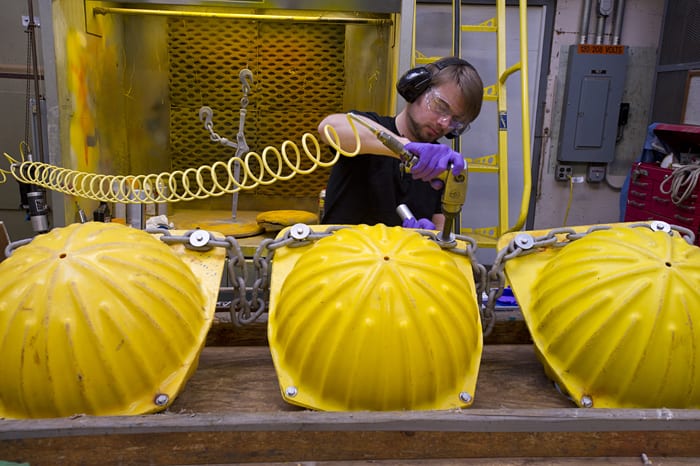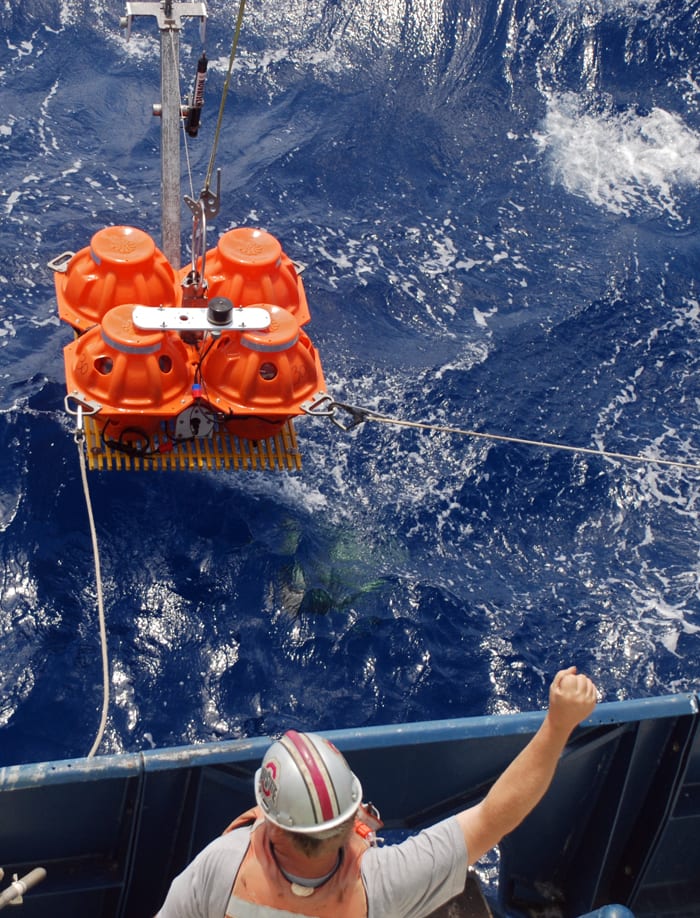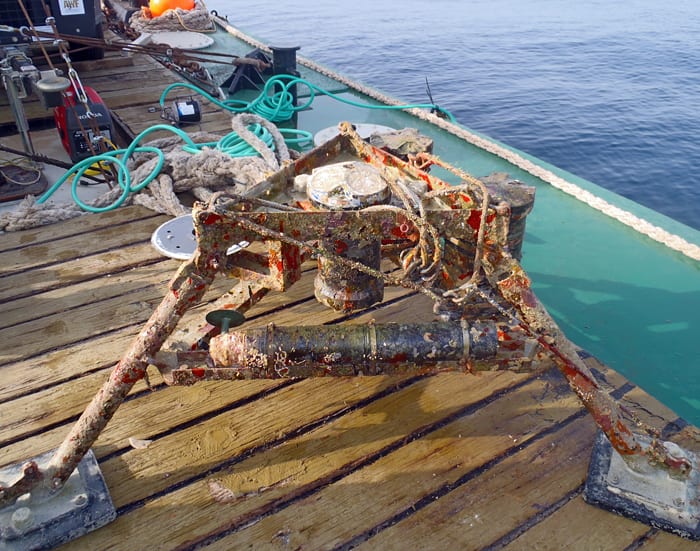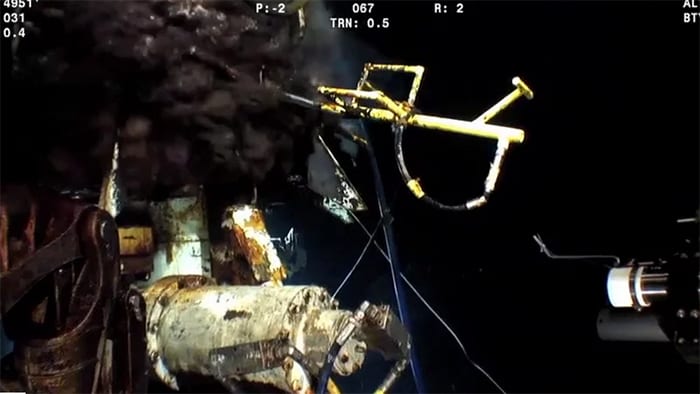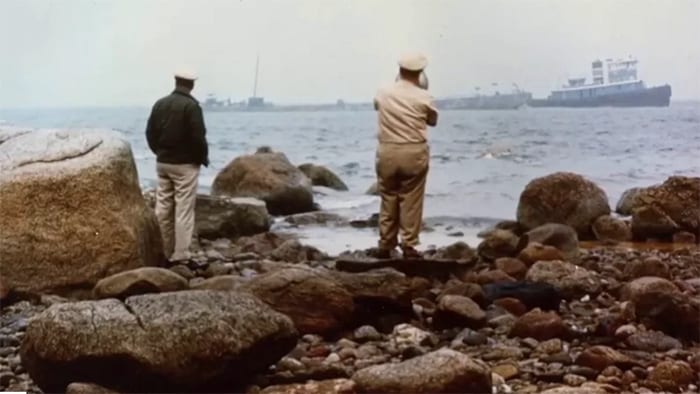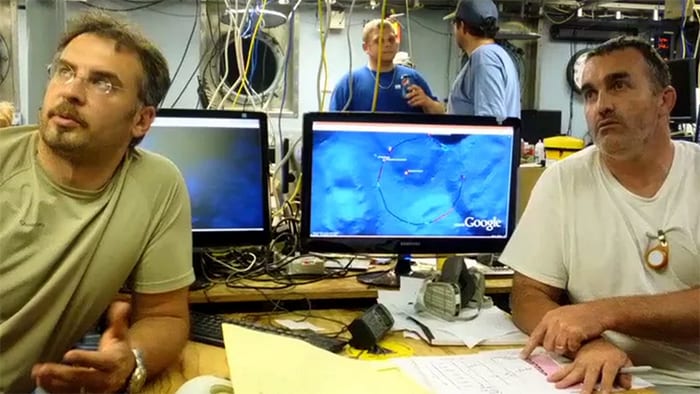Multimedia Items
Life in the Fast Lane
Observed by postdoctoral scholar Shawn Arellano (back left), Joint Program students Oscar Sosa and Jeanette Wheeler watch as fellow student Sara Bosshart adds fluorescein dye to WHOI’s racetrack flume to…
Read MoreCores for Climate History
Ellen Roosen (left) and Dan McCorkle retrieve a sediment core during a 2006 cruise aboardf R/V Oceanus. The core contains fossil shells of single-celled organisms called foraminifera–“forams” for short. Some…
Read MoreBarnacle Build-Up
An adult snail (large brown shell) and Northern rock barnacles of various ages crust a rock in the intertidal zone of Buzzards Bay. A large white barnacle is attached to…
Read MoreAirborne Oceanographer
Last winter, WHOI physical oceanographer Fiamma Straneo rode a helicopter above Sermilik Fjord (visible through the window) in eastern Greenland. From the air, she was able to search for patches…
Read MoreMeasuring Mercury
As part of a study of mercury cycling in Waquoit Bay, WHOI biogeochemists William Martin (left) and Carl Lamborg deployed the benthic chamber shown here. This instrument collects samples that allow…
Read MoreChecking the Day’s Catch
In December 2010 a multi-institution research team explored the bottom of the Gulf of Mexico with the submersible Alvin, to study deep-sea life. The expedition, funded as a National Science…
Read MoreFraming a Field
Fom left, Senior carpenter Rowland Cummings, engineer Paul Fucile, and post doctoral investigator Masako Tominaga view a custom Helmholtz Coil frame Cummings built, before winding wire on it. By passing…
Read MoreAssembling an Observatory
WHOI machinist Tim Kling uses a precision water-jet cutter to fabricate an internal frame member of a buoy destined to be part of an upcomig at-sea test of components of…
Read MoreKrill, Get Ready for Your Close-Up
During a cruise on the R/V Endeavor in fall, 2010, Bosun Patrick Quigley deploys the Video Plankton Recorder (VPR), assisted by Joint Program students Nick Woods (left) and Wu-Jung Lee. The…
Read MoreRed River Valley
Summertime meltwater forms lakes on Greenland’s ice sheet that suddenly disappear. WHOI glaciologist Sarah Das showed why—the water’s weight cracks the ice, draining to bedrock and lubricating the ice’s seaward…
Read MoreOn the Scene
From the deck of the research vessel Endeavor, WHOI chemist Ben Van Mooy (right) and others survey the scene near the burning Deepwater Horizon oil rig in the Gulf of…
Read MoreA Day at the Beach
In April, Coastal Ocean Institute director Chris Reddy returned to the Gulf of Mexico with research assistant Catherine Carmichael (above). The pair visited several beaches around the Gulf to collect…
Read MoreUsing Tiny Animals to Study a Big Problem
Biologist Ann Tarrant and postdoc Adam Reitzel examine tiny starlet anemones (Nematostella vectensis, the tan blobs visible in the dishes) that they culture. The anemones, from salt marshes all along…
Read MoreRecycling in the Ocean
Iron is essential for life, but is remarkably scarce in the ocean. WHOI scientists led by biogeochemist Mak Saito recently discovered that a key marine bacterium, Crocosphaera watsonii, may have…
Read MoreAnd the Band Played On
It’s a long-standing tradition for the Woods Hole Marching and Chowder Society to welcome WHOI ships and their crews back from long voyages. Welcoming Atlantis II to Woods Hole for the…
Read MoreColumbus Iselin, WHOI’s second director
Columbus O’Donnell Iselin, on the WHOI dock in about 1964, with WHOI’s original building, the cupola-topped Bigelow Lab, in the background. Iselin served as WHOI’s second director, from 1940 to…
Read MoreSentry on Patrol
In June 2010, aboard R/V Endeavor, WHOI engineers Al Duester (right) and Andy Billings (center) helped recover the autonomous underwater vehicle (AUV) Sentry after a dive in the Gulf of…
Read MoreFlaring off in the Gulf
The recovery vessel Q4000 burns off gas after receiving oil from a “choke line” plumbed into the blowout preventer of the Deepwater Horizon in June 2010, some two months after…
Read MoreHardhats at Work
Engineering assistant Matthew Adams prepares “hardhat” floats for use in an upcoming project in the Lofoten Basin between Iceland and Norway in the far northern Atlantic. WHOI physical oceanographer Fiamma…
Read MoreOBS Recovery
Crew aboard the R/V Atlantis recover an ocean bottom seismometer (OBS) during a January 2009 expedition. The sensitive instruments are deployed on the seafloor to record ground movements from undersea…
Read MoreA Coating of Many Colors
After a year in the Red Sea, this tripod is sporting a colorful growth of coral. It was recovered by John Kemp and Jim Ryder during a cruise led by…
Read MoreSampling the Source
Science in a Time of Crisis Part 3: Sampling the Source After measuring the flow rate of the fluid spewing out of the broken wellhead, the next step for WHOI…
Read MoreOil Spill Pioneers
Science in a Time of Crisis Part 1: Oil Spill Pioneers On Sept. 16, 1969, the barge Florida ran aground off Cape Cod, rupturing its hull and spilling more than…
Read MoreSearching for the Plume
Science in a Time of Crisis Part 4: Searching for the Plume Almost as soon as the spill began, speculation abounded about the fate of the oil. The slick on…
Read More
